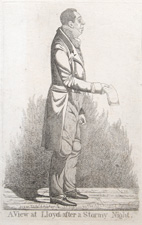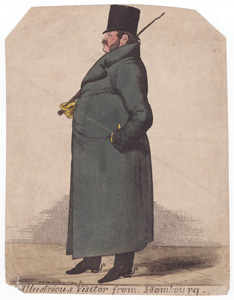Richard Dighton
(1795-1880)
The Golden Age of English satirical art began in the late eighteenth century with the etchings of Thomas Rowlandson and James Gillray and ended in the mid-1830s with the etchings of William Heath and George Cruikshank. After that time the emerging morals of Victorian society put an end to such forms of always exuberant and often outrageous compositions. During its height many artists supplied the London print sellers with their satirical etchings and caricatures. A father and son, the Dightons, were major contributors.
Richard Dighton trained in London under his father, Robert Dighton (1752-1814). Both father and son were popular etchers in the English satirical tradition. Unlike their contemporaries, however, their compositions are distinguishable by a more gentle and less critical brand of caricature. With the emphasis applied more to character the Dightons have often been seen as precursors of the Vanity Fair style of the late nineteenth century.
Richard Dighton published his first etching in 1815. By 1828 he had created over one hundred works of art in this medium. At that date he ceased etching and moved to the provinces, settling in both Cheltenham and Worcester. Over the next twenty years Richard Dighton worked mainly as a watercolor portraitist. After 1835 he again produced original prints, this time in the medium of lithography.
[
M. Dorothy George, Catalogue of Political and Personal Satire, The British Museum, London, 1952, Vol. X, pp. 267-268.
Catalogue # 1429.] |



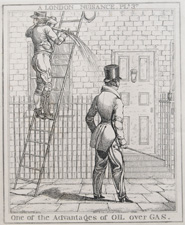
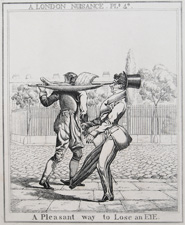


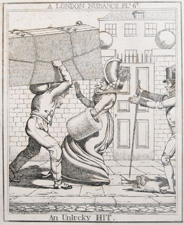
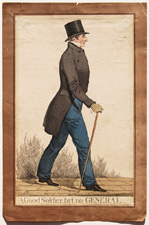


![CHARLEY the PRINCIPAL[D] BROKER](images/images/Richard%20Dighton%20caricatures/charley-c.jpg)
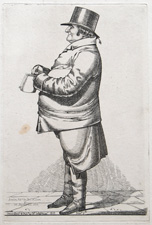
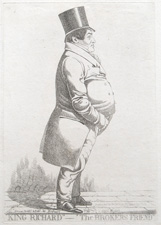
!['I TOOK[E] thee for thy betters.'](images/images/Richard%20Dighton%20caricatures/tooke-c.jpg)
